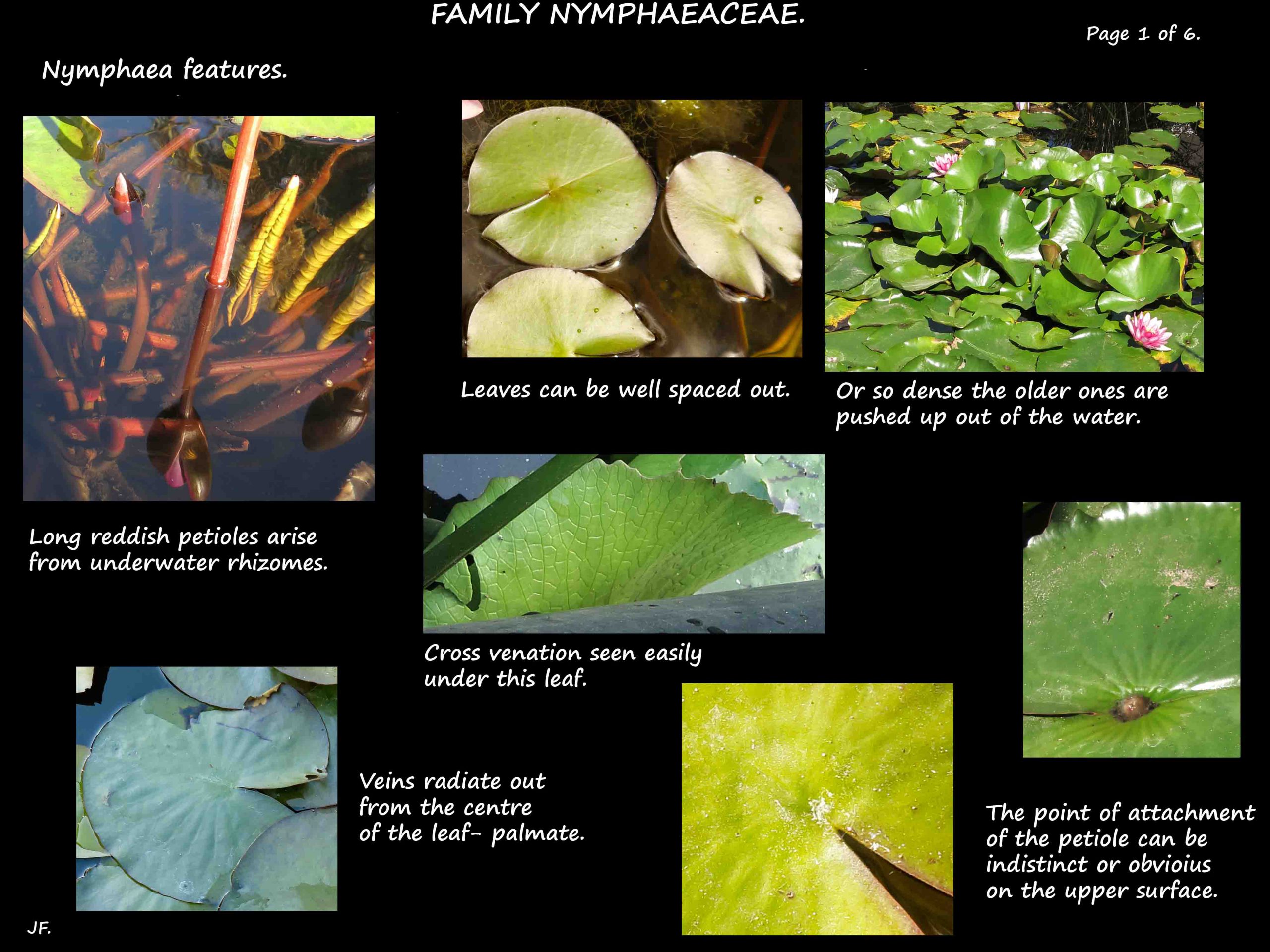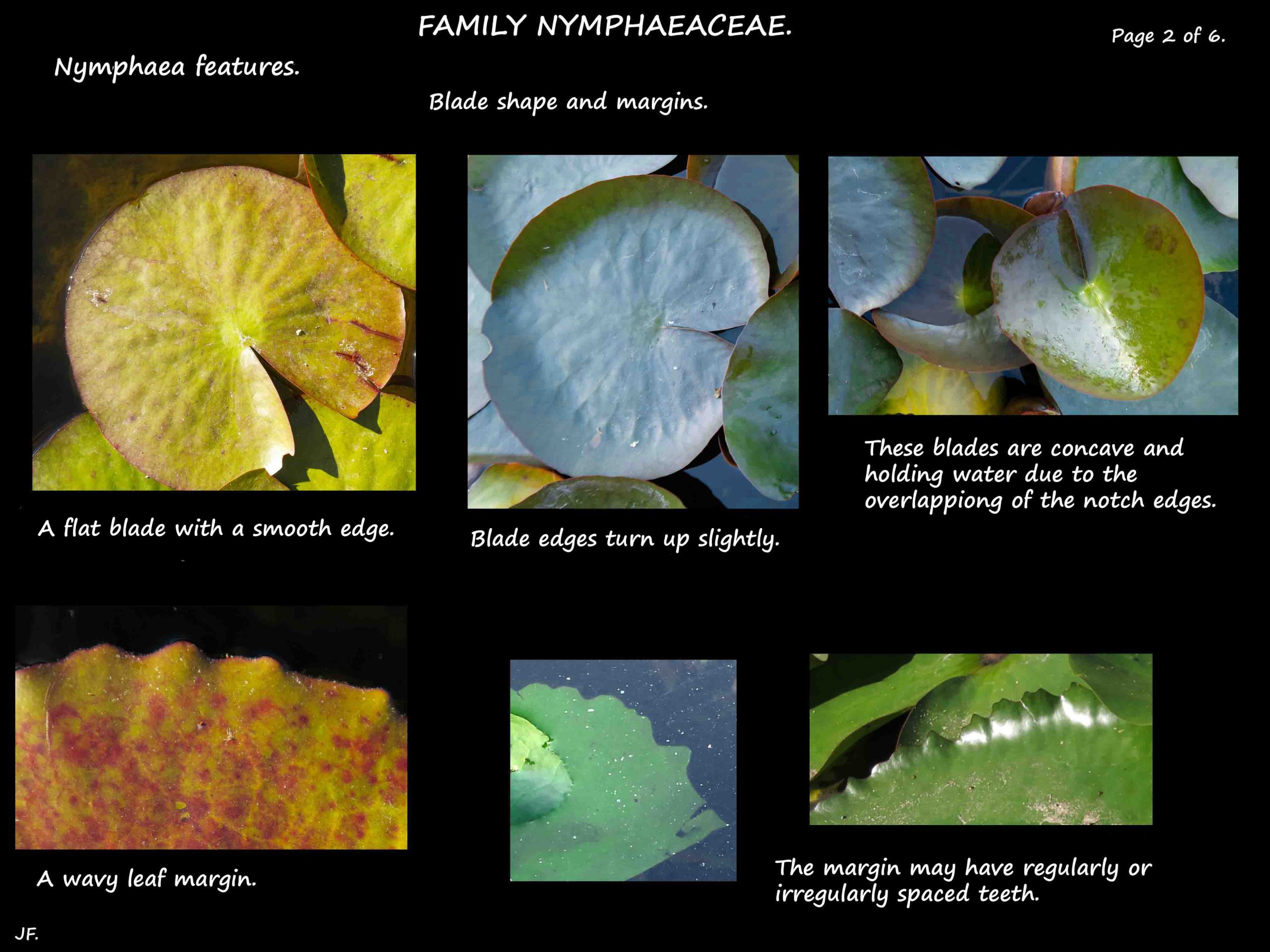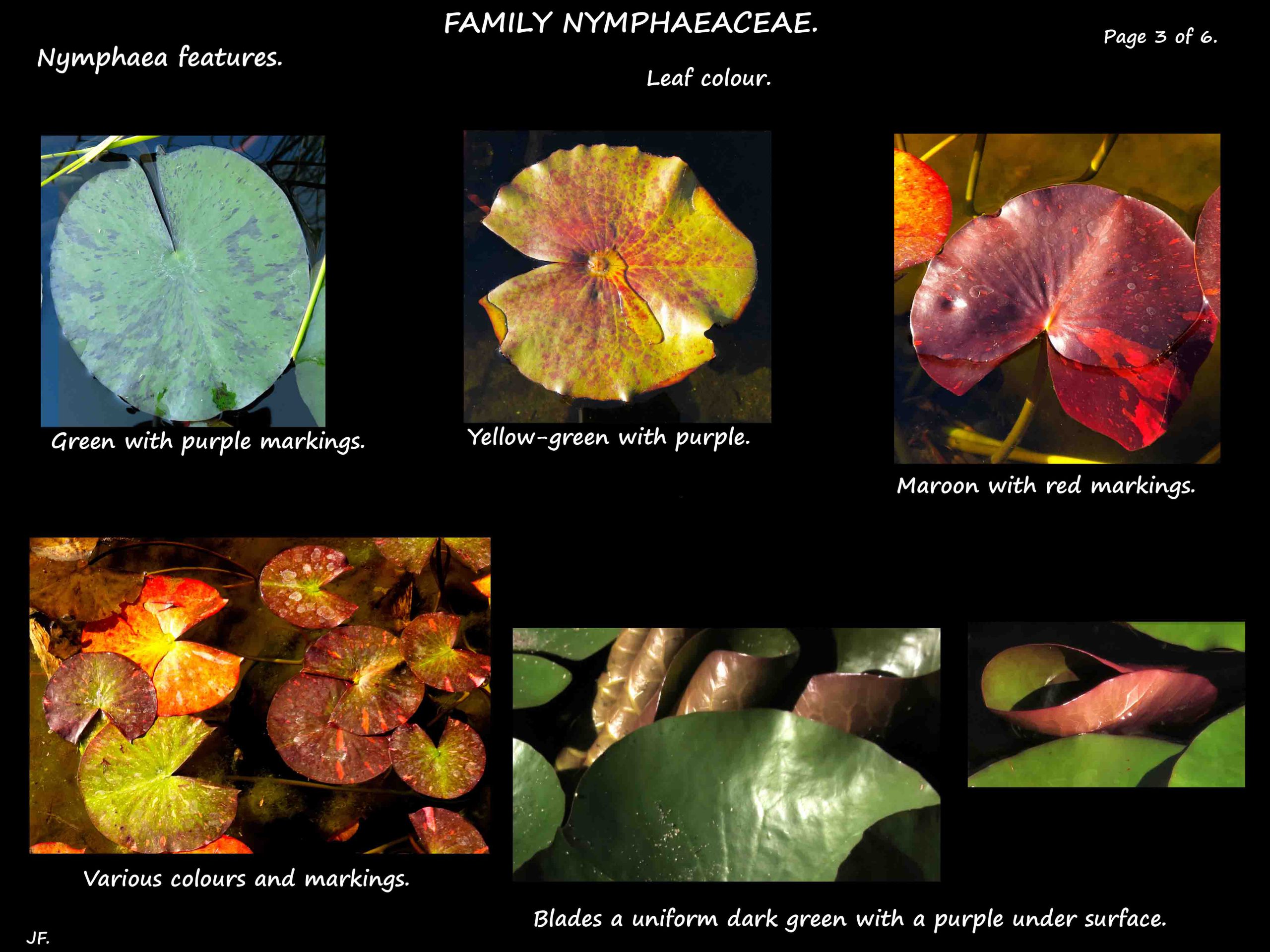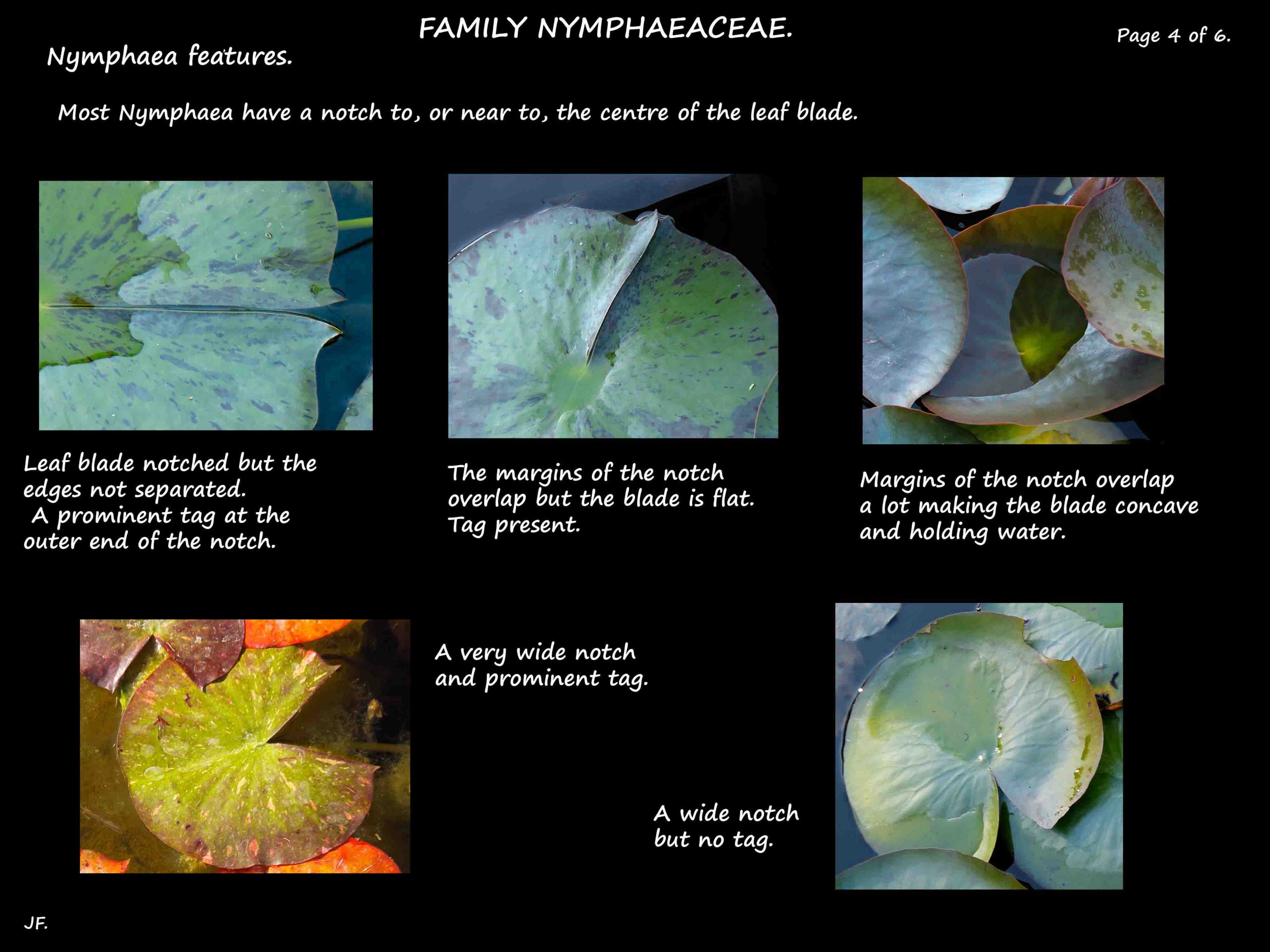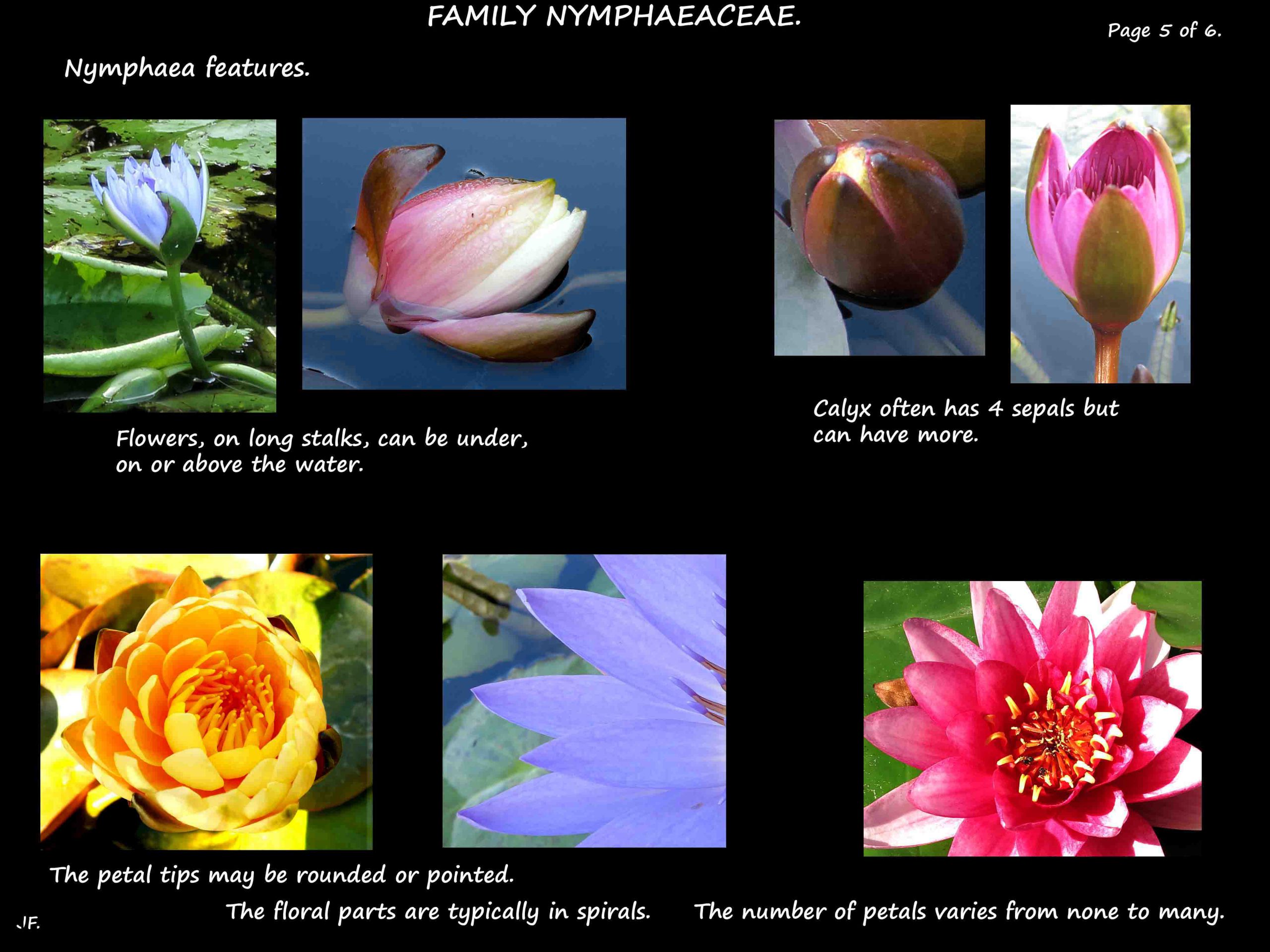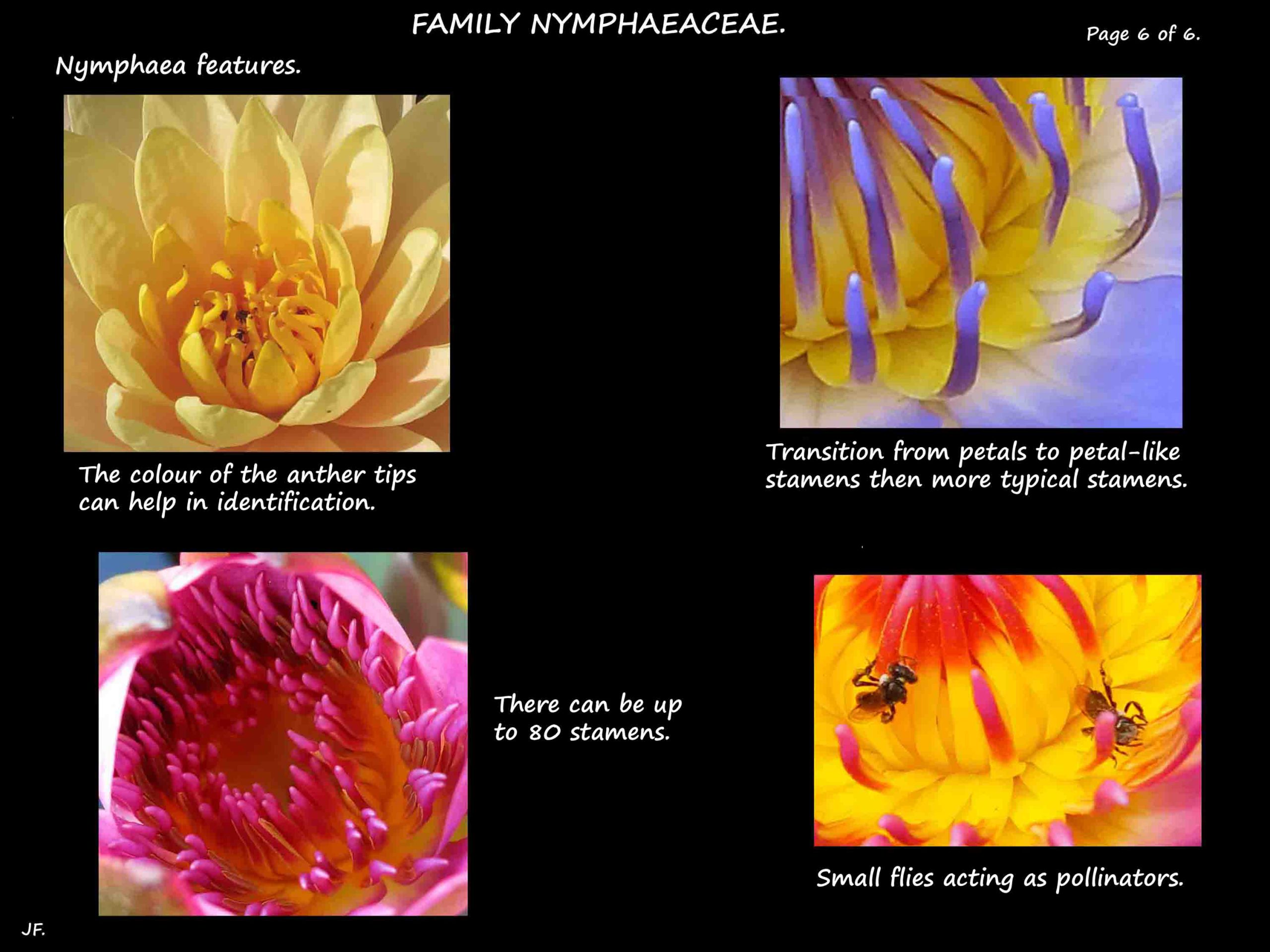Nymphaea.
The Order Nymphaeales was the second group to diverge from the common ancestor after the Amborellaceae.
They are aquatic herbs with leaves and flowers which may be under, on, or above the water.
Leaves vary from a few centimetres to 2 metres across.
Family Nymphaeaceae has 6 (5) genera with the 2 main ones being Nuphar with 10-12 species and
Nymphaea with 35-70+ species depending on how they are classified.
Waterlilies.
Nymphaea are the typical waterlilies of which there are many hybrids and cultivars.
Australia has 2 genera and about 15 species plus 2 or 3 species naturalised.
The following is a generalised description of water lilies.
They are annual or perennial aquatic herbs with horizontal or vertical underground rhizomes or tubers.
All parts may contain a milky latex.
The medium to large, spirally arranged leaves typically float when mature.
The long petioles, sometimes with wings, may or may not have stipules.
Typically the blade is round with the petiole attached towards its centre.
The margin may be smooth or toothed, have a radial slit or be wavy.
Venation is palmate.
The solitary flowers, on long stalks, are typically large and showy and on or near the surface.
The Australian plants all have flowers above the water.
Flowers are bisexual and the parts are usually in spirals.
The calyx usually has 4 (6 -14) sepals, green outside and with the edges coloured like the petals.
Sometimes they are flecked with purple or pink.
The corolla has few or many petals, the inner ones gradually changing into laminar stamens.
The numerous petals can be white, pink, cream or yellow.
(Other genera have white, blue or pink petals or a mixture of those colours.)
There are 40–80 spirally arranged stamens the outer ones being petal-like and the inner ones gradually
becoming like typical stamens with filaments and anthers.
Pollen is released via vertical slits in the anthers that open inwards or sideways.
There are up to 20 sterile stamens or staminodes.
The ovary is usually multilocular being formed by the fusion of the 3 to 30 carpels.
Each locule has up to 100 ovules.
The fruit is a capsule which ruptures or a fleshy berry.
J.F.
